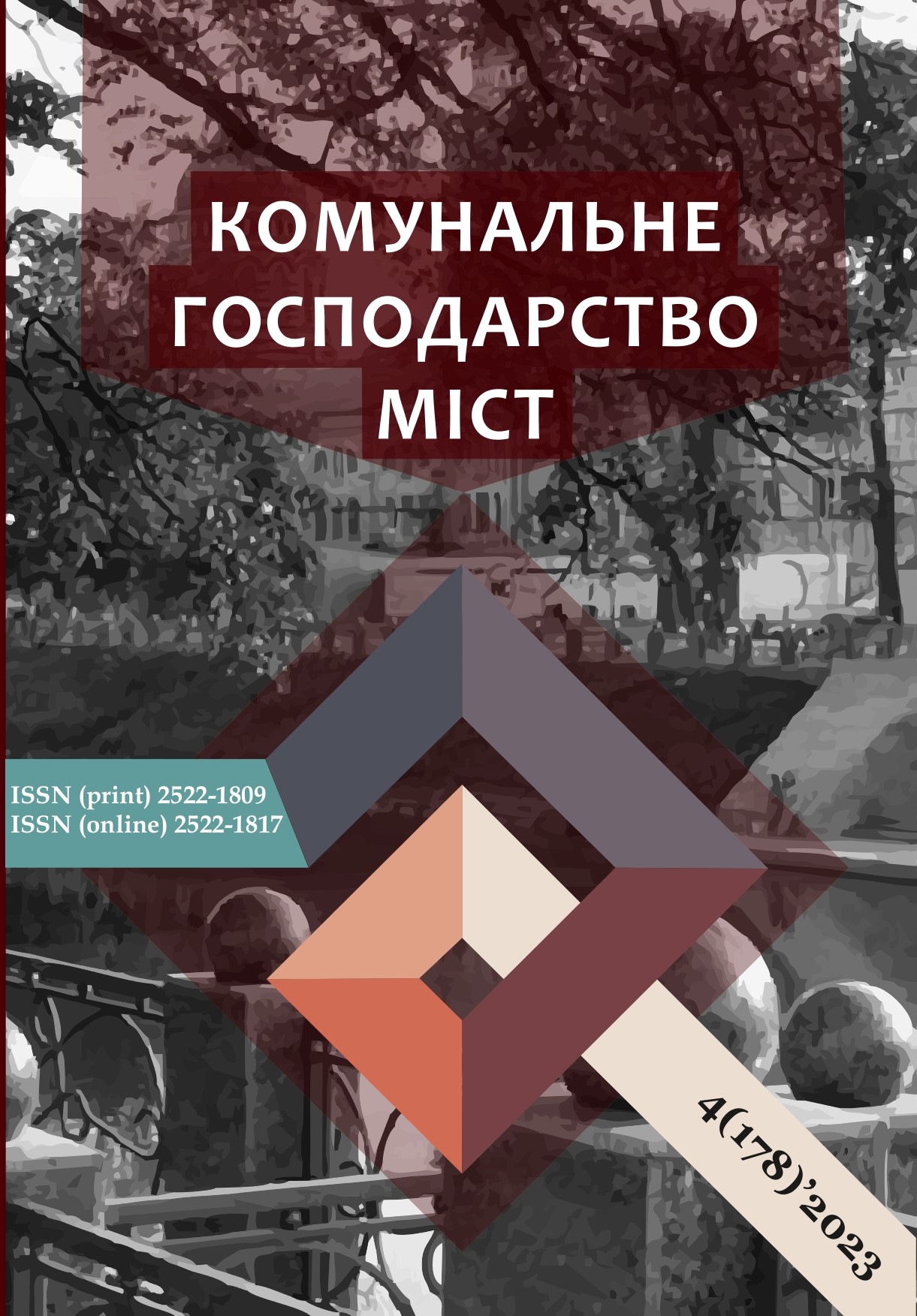MODERN METHODS OF URBAN ENVIRONMENT LAND USE MONITORING
DOI:
https://doi.org/10.33042/2522-1809-2023-4-178-125-129Keywords:
monitoring, geoinformation system, modeling methods, land use, factors influencing land useAbstract
In the context of urbanization and global climate change, the need to adapt and respond to land use dynamics is becoming increasingly important. Cities are constantly transforming, and this transformation affects the social, economic and environmental aspects of the lives of their inhabitants. Accordingly, monitoring tools and methods must be flexible, adaptive and capable of working in real time. Thanks to the latest technologies and monitoring methods, it became possible to quickly analyse changes and predict the future of urban development. In this aspect, remote sensing of the Earth should be noted. The advantages of this tool include: large territorial coverage; high frequency of pictures; the possibility of analysis in different spectral ranges, etc. Geoinformation systems are an equally important tool. GIS allows you to combine, analyse and visualize spatial data. 3D modelling can also be noted as an important tool. With the help of modern technologies, such as laser scanning, it has become possible to create detailed three-dimensional models of urban areas. Separately, automated systems for controlling the use of the territory of cities should be singled out. Due to the proliferation of digital technologies, citizens can actively participate in monitoring processes using mobile applications, public observation platforms and other tools for data collection and sharing. In the monitoring processes of urban land use, mathematical modelling plays a key role in predicting urban land use. The models help researchers and authorities understand current trends and make predictions about the future development of urban areas. Several mathematical modelling approaches can be distinguished, which include: city growth models, geostatistical models, agent-based models, regression models, system dynamic models, optimization models, landscape ecology, diffusion models, socio-economic models, scenario analysis models , combined models. Several different modelling methods are often combined to obtain the most complete and accurate picture.
References
Petrakovska O., Lizunova A. (2009). Urban planning in private property conditions in Ukraine. International Academic Group On Planning, Law And Property Rights. Third Conference. Aalborg, Denmark.
Pieri, C., Dumanski, J., Hamblin, A., Young, A. (1996). Land Quality Indicators. World Bank Discussion Papers. – Washington: The World Bank, 315, 51.
Tregub, M., Trehub, Y. (2015) Substantiation of land management methods of industrial cities. Theoretical and Practical Solutions of Mineral Resource Mining. Taylor & Francis Group, London, 449–452.
Haj, F., Ouadif, L., Akhssas, A. (2023) Monitoring Land Use and Land Cover Changes Using Remote Sensing Techniques and the Precipitation-Vegetation Indexes in Morocco. Ecological Engineering & Environmental Technology, 24(1), 272–286. https://doi.org/10.12912/27197050/154937
Souidi, H., Ouadif, L., Bahi, L., Elhachmi, D., Edderkaoui, R. (2020) Application of stochastic process & cellular automata integrated to GIS for land monitoring: Coastal Chaouia, Morocco. International Journal of Advanced Research in Engineering and Technology. 11(5). 245–252.
Brown, A. (1989). Extended differential GPS. Navigation, 36 (3), 265–285. Retrieved from: https://www.ion.org/publications/abstract.cfm?articleID=100290
Rizos, C. (1999). Principles and Practice of GPS Surveying. Retrieved from: http://www.gmat.unsw.edu.au/snap/gps/gps_survey/
Teunissen, P.J.G., Bock, Y., Beutler, G., et al. (1998). GPS for geodesy. Berlin, Springer. Retrieved from: https://catalogue.nla.gov.au/
Downloads
Published
How to Cite
Issue
Section
License
The authors who publish in this collection agree with the following terms:
• The authors reserve the right to authorship of their work and give the magazine the right to first publish this work under the terms of license CC BY-NC-ND 4.0 (with the Designation of Authorship - Non-Commercial - Without Derivatives 4.0 International), which allows others to freely distribute the published work with a mandatory reference to the authors of the original work and the first publication of the work in this magazine.
• Authors have the right to make independent extra-exclusive work agreements in the form in which they were published by this magazine (for example, posting work in an electronic repository of an institution or publishing as part of a monograph), provided that the link to the first publication of the work in this journal is maintained. .
• Journal policy allows and encourages the publication of manuscripts on the Internet (for example, in institutions' repositories or on personal websites), both before the publication of this manuscript and during its editorial work, as it contributes to the emergence of productive scientific discussion and positively affects the efficiency and dynamics of the citation of the published work (see The Effect of Open Access).

